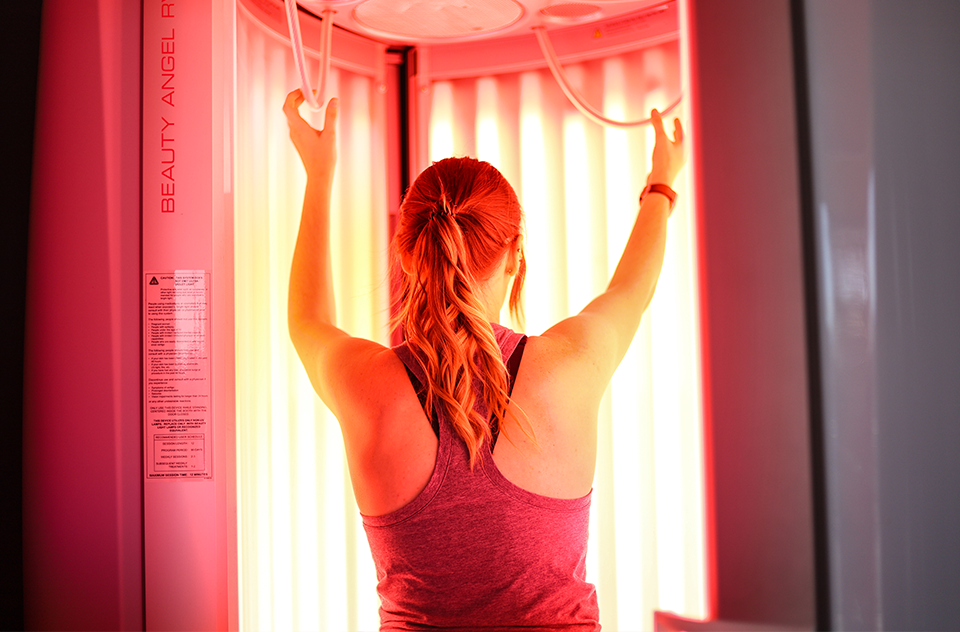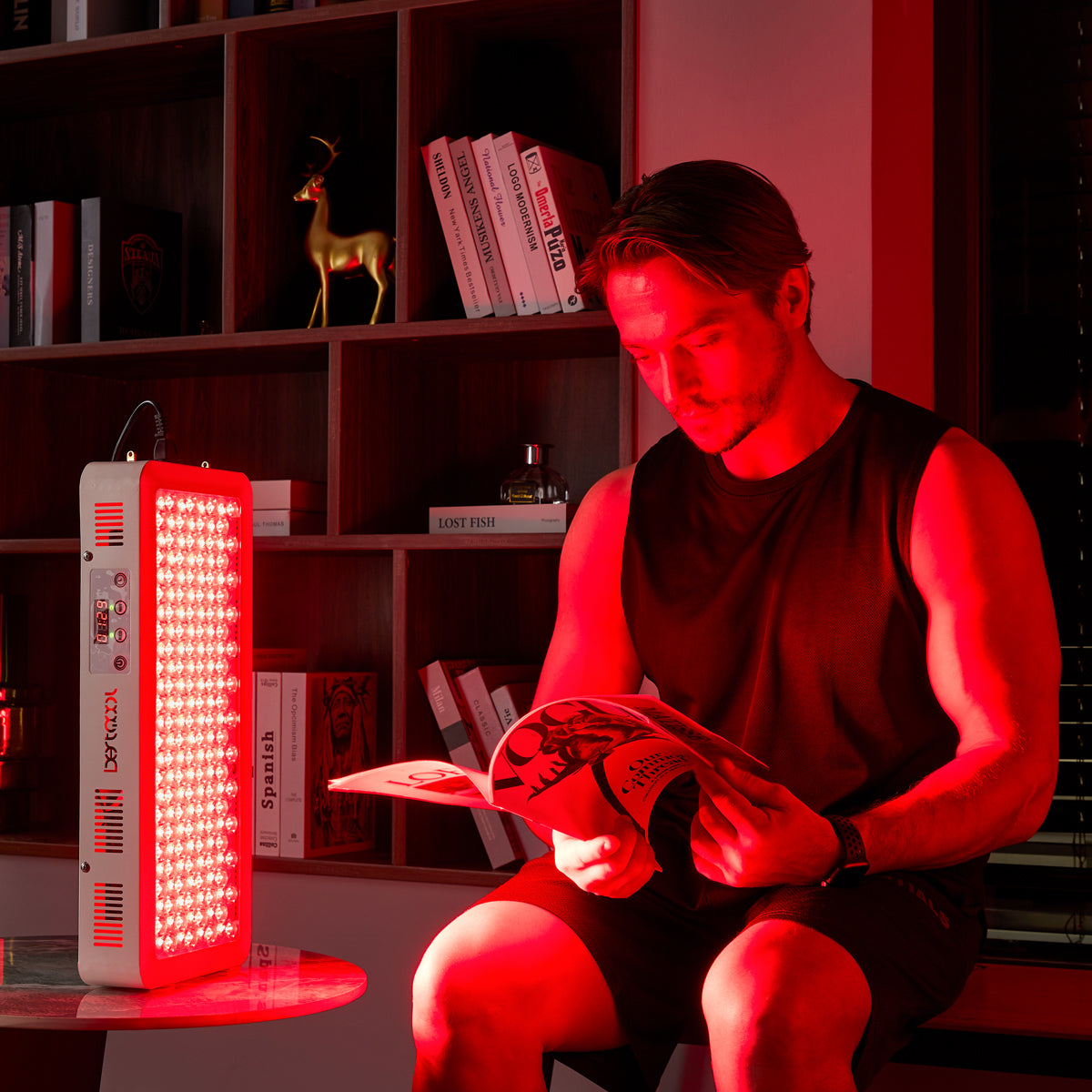PBM Light Therapy: Shedding Light on Healing and Wellness
Wiki Article
Taking Advantage Of the Power of Light: Photobiomodulation as an Alternate Treatment
Are you tired of typical therapies that feature unwanted adverse effects? Look no more! Presenting photobiomodulation, a sophisticated choice therapy that utilizes the power of light to promote healing and health. This cutting edge strategy makes use of details wavelengths of light to promote cellular procedures, setting off a waterfall of beneficial impacts in your body. From decreasing swelling to boosting tissue fixing, photobiomodulation is rapidly getting recognition as a secure and effective treatment choice for a broad variety of medical and aesthetic problems. Whether you're seeking remedy for persistent discomfort, increasing wound healing, or enhancing the appearance of your skin, photobiomodulation uses a non-invasive and drug-free option. Sign up with the light therapy revolution and uncover the transformative potential of photobiomodulation today!Recognizing Photobiomodulation
To much better understand photobiomodulation, you must initially understand the basic principles behind this innovative therapy. Photobiomodulation, additionally called low-level laser therapy or cool laser treatment, involves the usage of certain wavelengths of light to promote mobile feature and promote recovery in the body. This therapy functions by taking advantage of the power of light to enhance the all-natural processes of tissue repair service and regrowth.The standard principle behind photobiomodulation depends on the capability of light energy to permeate the skin and interact with cells. When details wavelengths of light are soaked up by cells, it triggers a collection of biochemical reactions that lead to various therapeutic impacts. These effects include boosted manufacturing of adenosine triphosphate (ATP), the energy currency of cells, as well as enhanced blood flow and oxygenation to the treated location.

Systems of Activity
To comprehend the devices of action behind photobiomodulation, you need to dive right into exactly how certain wavelengths of light interact with cells in the body. Photobiomodulation works by promoting cellular task with the absorption of light by chromophores, which are light-sensitive particles found within cells. These chromophores, such as cytochrome c oxidase in the mitochondria, are accountable for converting light power right into biochemical signals that can influence cellular function.
Additionally, photobiomodulation has been shown to enhance blood circulation and the release of nitric oxide, a molecule associated with vasodilation. This boosted circulation can boost the delivery of oxygen and nutrients to the tissues, advertising cells repair service and regeneration.
Additionally, photobiomodulation has been located to modulate different mobile signaling paths, including those associated with swelling and oxidative anxiety. By minimizing inflammation and oxidative stress and anxiety, it can help relieve pain and promote cells recovery.
Medical Applications
By stimulating cellular repair work and advertising neuroplasticity, photobiomodulation has actually revealed potential in enhancing neurological function and cognitive my company abilities. Photobiomodulation can decrease inflammation, promote cells regrowth, and reduce pain in these dental problems. As research proceeds to reveal the advantages and mechanisms of photobiomodulation, its clinical applications are likely to expand, offering brand-new opportunities for alternate treatment.Visual Applications
Check out the transformative possibility of photobiomodulation in boosting aesthetic look and rejuvenating the skin. Photobiomodulation, additionally called low-level light therapy (LLLT), has acquired appeal in the field of appearances due to its non-invasive nature and basics capacity to target particular skin worries. photobiomodulation. By utilizing different wavelengths of light, photobiomodulation can stimulate cellular task, rise collagen production, advertise flow, and lower swelling, inevitably leading to boosted complexion, appearance, and total lookOne of the main visual applications of photobiomodulation remains in the therapy of acne. By utilizing blue light therapy, which targets the bacteria in charge of causing acne, photobiomodulation can effectively lower breakouts and swelling. This non-invasive technique provides a mild and risk-free alternative to traditional acne therapies, such as topical creams or dental medicines.
In addition, photobiomodulation has actually been shown to be reliable in minimizing the appearance of great lines and wrinkles. By boosting collagen manufacturing and enhancing skin flexibility, red light treatment can assist lessen the signs of aging and advertise a more younger skin tone. This natural and non-invasive method is especially interesting those that desire to prevent even more invasive procedures, such as shots or surgical treatments.
Future Instructions and Prospective Limitations
Looking in advance, the future of photobiomodulation holds prospective difficulties and amazing possibilities. One prospective future direction is the development of wearable gadgets that can supply targeted photobiomodulation treatment.An additional encouraging instructions is the combination of photobiomodulation with other therapeutic modalities, such as pharmacological representatives or regenerative medication. By synergistically integrating these treatments, researchers intend to accomplish boosted restorative results and speed up the healing procedure. Moreover, recurring research study aims to identify ideal criteria for photobiomodulation, such as the perfect wavelength, dose, and therapy period. This his response will aid develop standardized protocols and guidelines for experts, ensuring reproducible and constant results.
One difficulty is the requirement for more research study to totally clarify the hidden mechanisms of photobiomodulation. In addition, the high expense and restricted schedule of customized devices might prevent prevalent fostering of this treatment (photobiomodulation therapy).
Final Thought
In verdict, photobiomodulation has actually become a promising alternative therapy with its ability to harness the power of light. Its systems of activity are being far better recognized, and it reveals possible in various medical and aesthetic applications. As research continues to explore its full potential, it is important to deal with any type of prospective restrictions and think about future directions for this ingenious treatment.Introducing photobiomodulation, an innovative alternative therapy that harnesses the power of light to promote healing and wellness. Join the light treatment change and discover the transformative potential of photobiomodulation today!
Photobiomodulation, likewise known as low-level laser treatment or cool laser therapy, entails the usage of specific wavelengths of light to stimulate mobile function and advertise recovery in the body. Photobiomodulation, likewise known as low-level light treatment (LLLT), has acquired popularity in the field of aesthetics due to its non-invasive nature and capability to target specific skin worries.In conclusion, photobiomodulation has emerged as an encouraging choice therapy with its ability to harness the power of light.
Report this wiki page